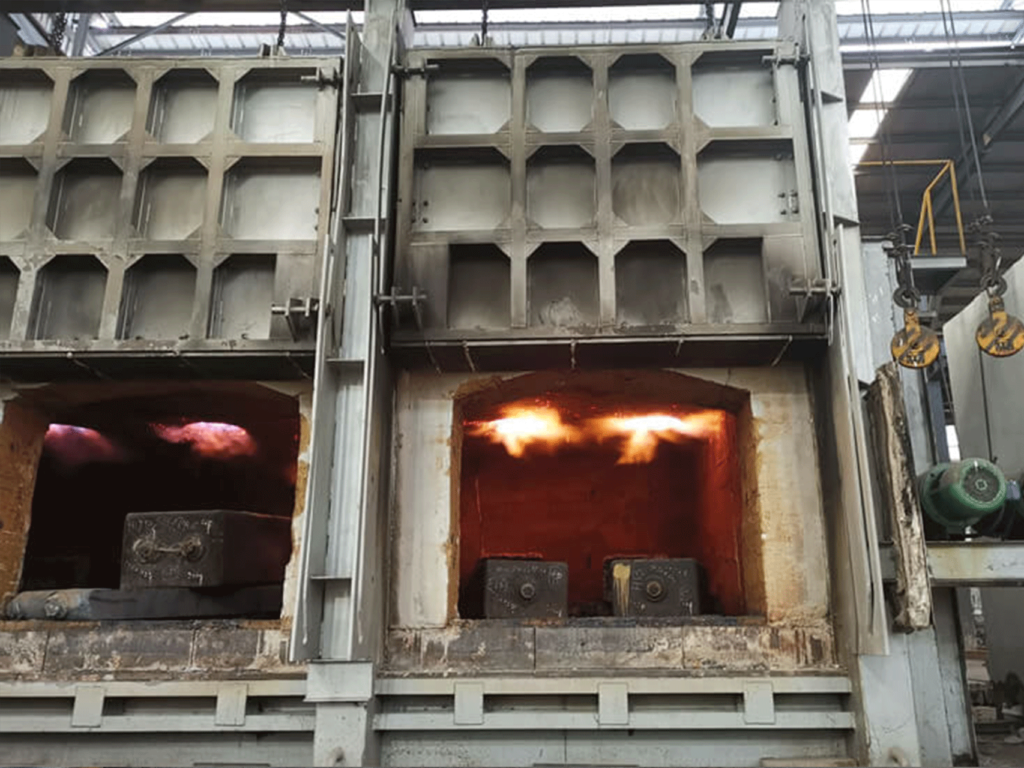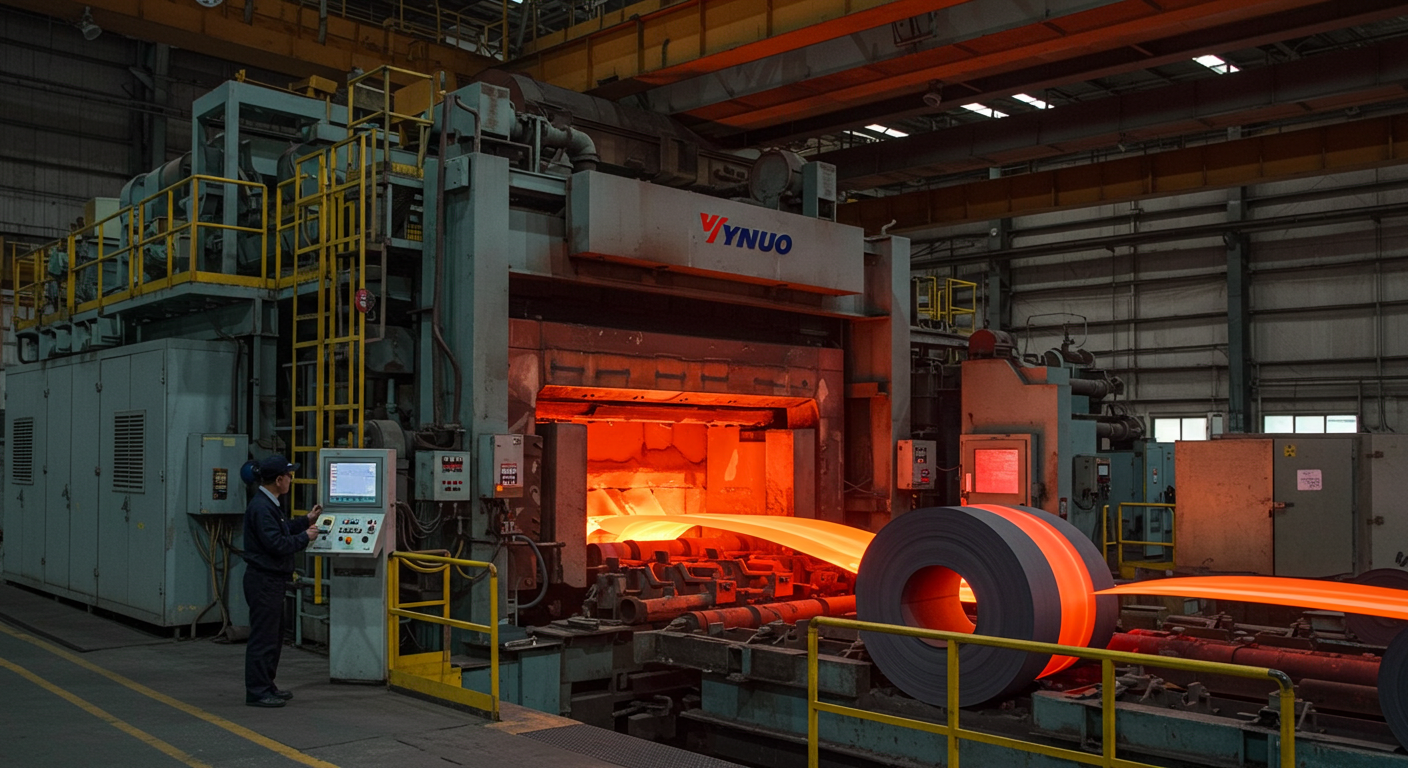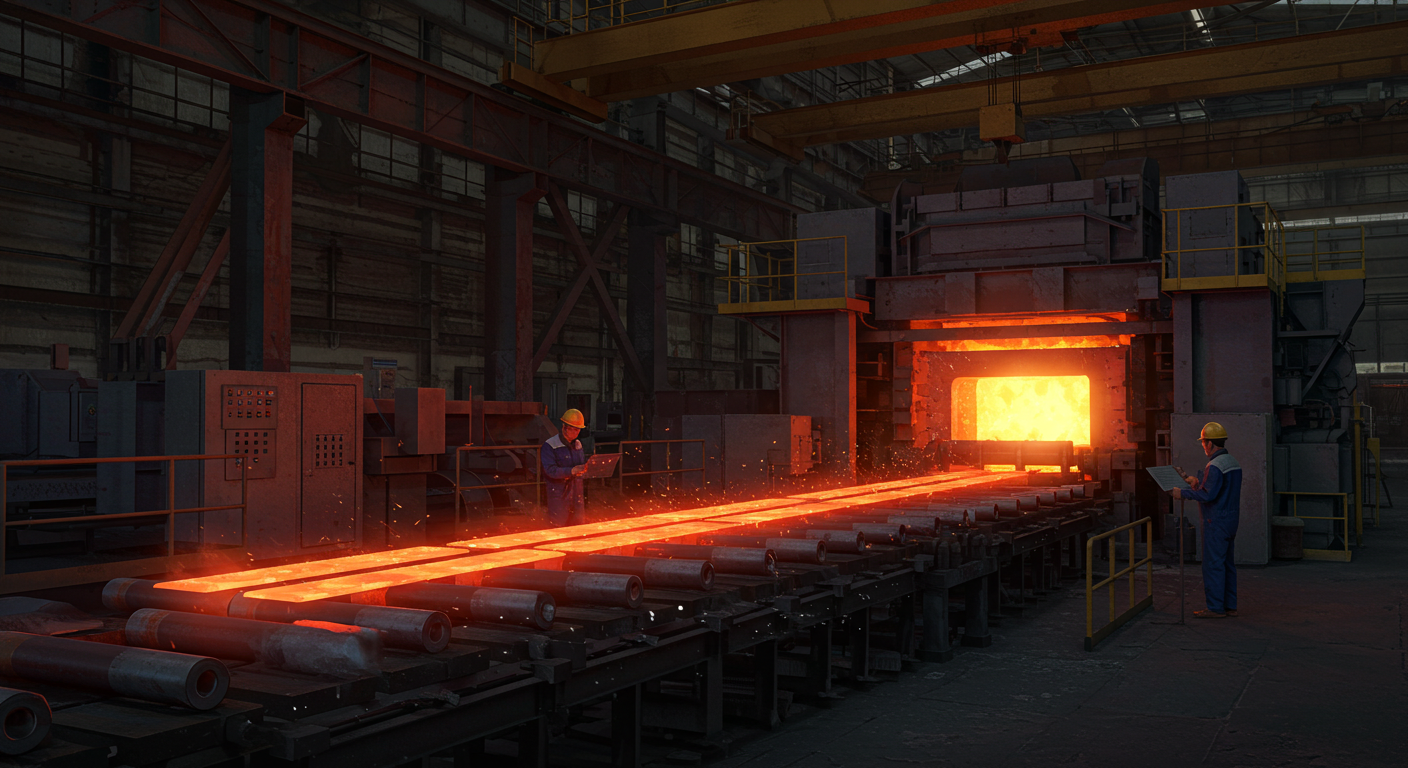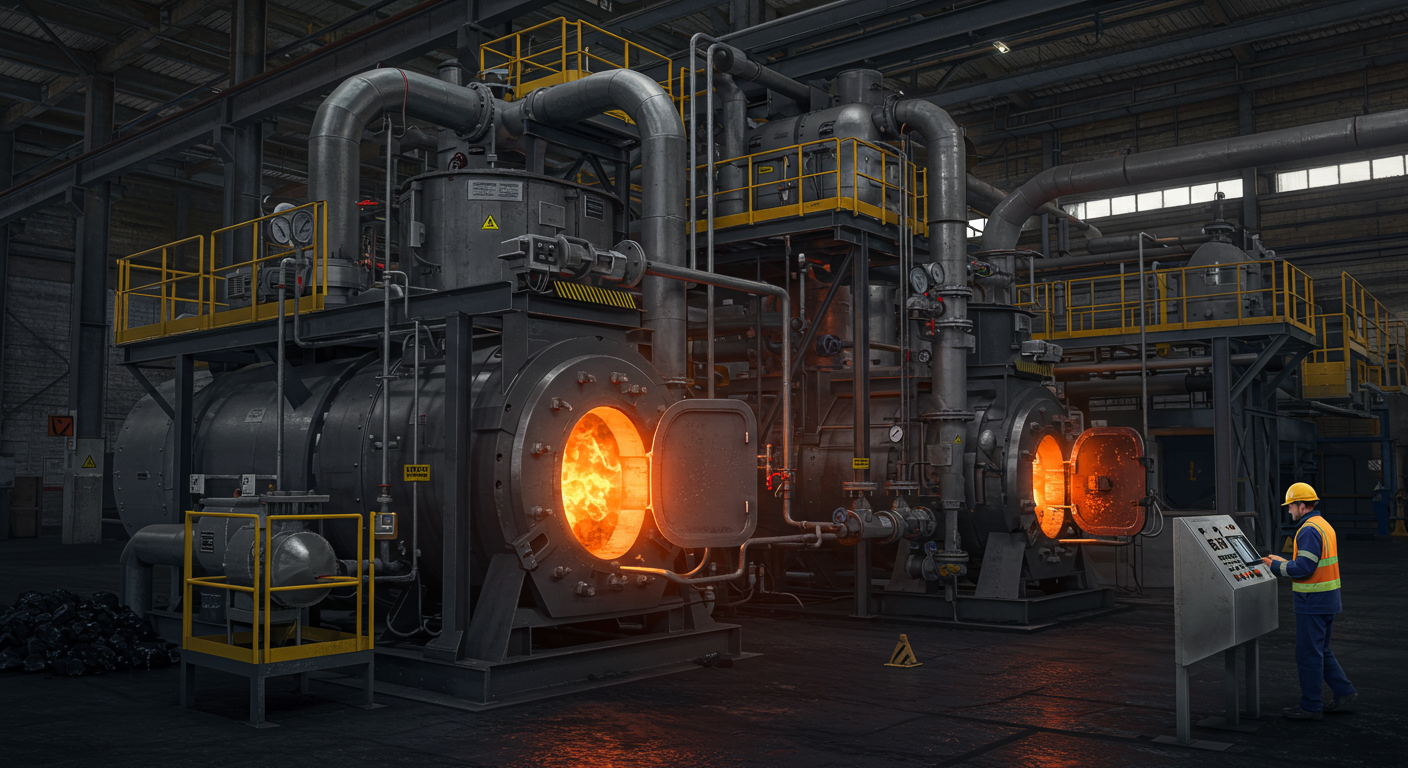What is a furnace in forging? If you want to know more about our continuous forging furnace, this article will give you some introduction. First of all, a furnace is an important kind of equipment in the forging industry. The main function is to heat the metal to a certain temperature and keep the heating status. Normally, it can be divided into a hot blast furnace and an electric induction furnace.
What Is Furnace In Forging?
A furnace is a device or chamber in which a chemical reaction takes place. It is used for various kinds of industrial processing. A furnace can be used to heat treat, calcine, smelt, and forge. These kinds of furnaces are usually manufactured by professional industry manufacturers.
Forging is an ancient metalworking process that involves the shaping of metal using localized compressive forces. The blows are delivered with a hammer (or a series of such hammers) directly to the workpiece, which may be shaped similarly to a blacksmith’s hammer. The term “forging” often implies forming something from a solid piece of metal, but forging may also be used for the production of some types of objects that are made from relatively soft materials.
In order to forge metal, heat must first be applied to soften it. During this treatment called annealing, the metal is brought up to its recrystallization temperature range by heating it in a gas or charcoal flame or with an induction furnace. As soon as the metal cracks or crumbles, or when its surface bubbles begin to disappear, it has reached the appropriate temperature and should be removed from its heat source immediately. Forging can then begin without further delay.

What Is The Definition Of Forge And What Is Furnace In Forge?
In simple words, a forge is a furnace that produces high temperatures for shaping metals by the application of direct heat. A forge is typically used to heat metals to a temperature so that the metal can be shaped by hammering. A furnace on the other hand is a structure or container in which heat or fire can be produced to melt or vaporize materials and/or harden them. It also refers to any enclosed chamber that utilizes heated gases or liquids to produce high temperatures.
Forging is a manufacturing process that uses compressive forces to produce net shape products. To forge a part, the metal is heated to a temperature above its recrystallization temperature, but below its melting point. The part is then hammered or pressed, while it is hot. This causes the atoms to redistribute within the metal, thereby creating a new microstructure comprising an arrangement of grains and grain boundaries (crystallites).
Forging has been defined as “the shaping of metal by localized plastic deformation at elevated temperature”. The location where the force is applied is called the forging tool and the die or tool used to shape the metal is called the die.
Furnace In Forging: What Does It Mean?
Forging is a process of metal shaping by hammering. In this process, the metal is heated to a suitable temperature and then hammered to get the required shape. Forging can be done in the open air or in a furnace.
If you are a beginner in the field of forging, then it is important for you to know about furnaces. The function of the furnace is to heat up the metal so that it becomes malleable and can be shaped easily by pressing it between the dies. This is why furnaces are also called hot-working machines. There are different types of furnaces available depending on their size and power capacity.
There are two main types of furnaces used for forging:
Continuous Forging Furnace. This type of furnace is used for continuous forging. The process takes place in a continuous motion and the temperature difference is small. The material being forged is heated to a high temperature, but it does not cool down between cycles. This allows you to produce large amounts of parts at once and makes it possible to produce parts that are very thin or have holes in them.
Intermittent Forging Furnace. This type of furnace is used when it is necessary to stop and start up again while the material is being forged. The process of heating and cooling down must be done in stages, so it takes longer than continuous forging but produces fewer parts at once.
What Is Furnace In Forging And What Are Its Applications?
YINUO continuous forging furnace is a kind of continuous casting equipment that can produce a variety of castings with different shapes, sizes, and structures. It mainly consists of two parts: the feeding part and the moving part.
The feeding part has a feeding system to feed the raw materials into the furnace, while the moving part is equipped with four sets of rollers that can move forward or backward at high speed. By adjusting these rollers, we can adjust the size of the finished product.
Applications:
- Forging of large-sized products such as complex castings and heavy forgings;
2) Forging of large-sized products with reduced weight;
3) Forging large-sized products with improved mechanical properties.
What Is Furnace In Forging And How Does It Work?
A furnace (plural: furnaces) is an enclosed space in which something happens that requires heat or generates heat, such as a metal smelting furnace or an incinerator. The function of a furnace can be used for heating or industrial processes such as refining metals including steel, glass making, or melting materials such as casting brass alloys.
In the forging process, the furnace is used to heat the workpiece to high temperatures so that it can be shaped into a desired form. Other than heating the workpiece, the furnace plays an important role in controlling heat loss during the forging process. The amount of time required to reach the forging temperature depends on the size and thickness of the workpiece as well as the type of material used.
Concluding Remarks
YINUO continuous forging furnace is a new type of continuous casting machine which is characterized by high efficiency, high production capacity, high automation, and energy saving. It is used for the continuous casting of steel products such as steel pipe and steel bars. The products are mainly used in construction machinery and engineering machinery industry etc.







